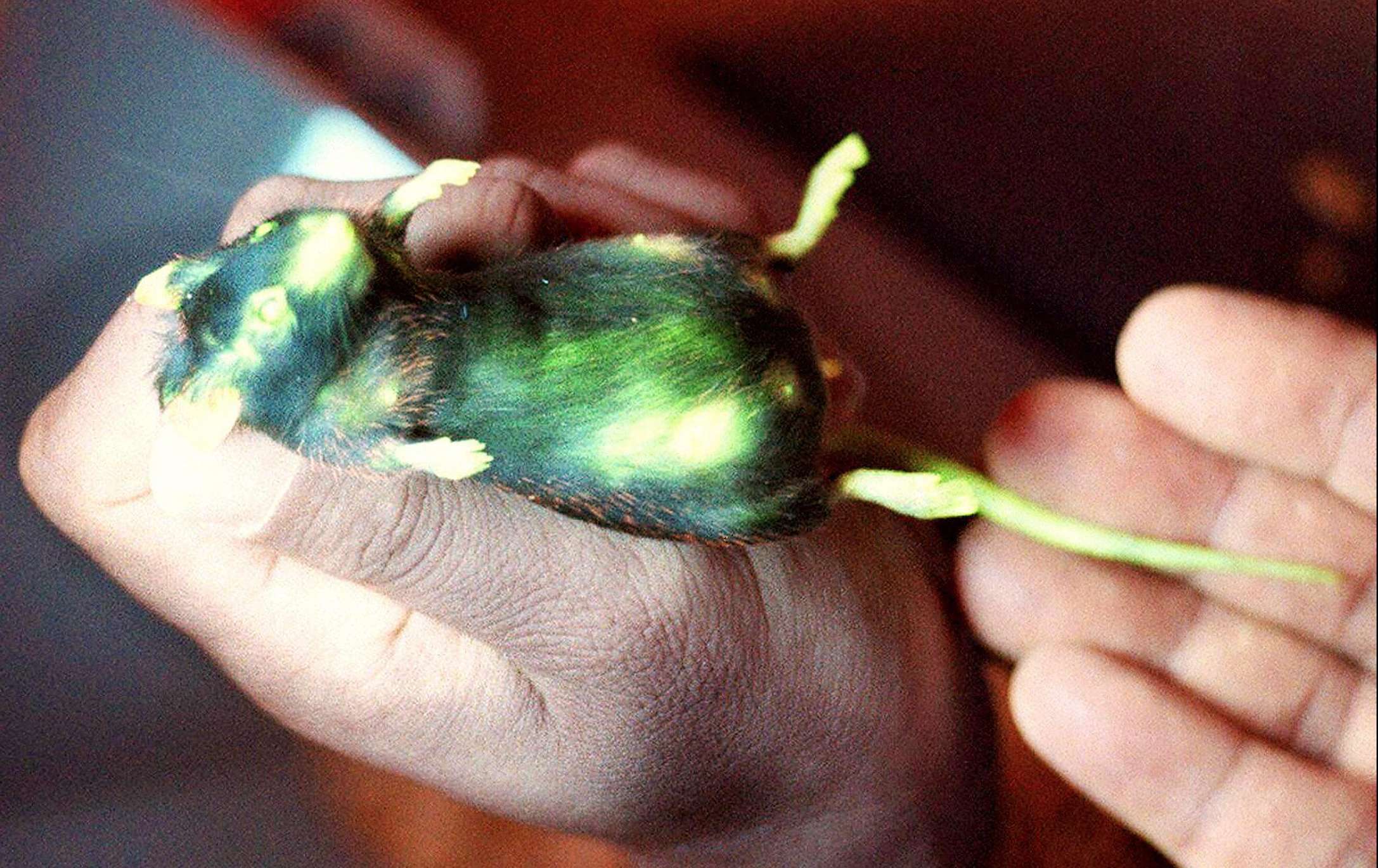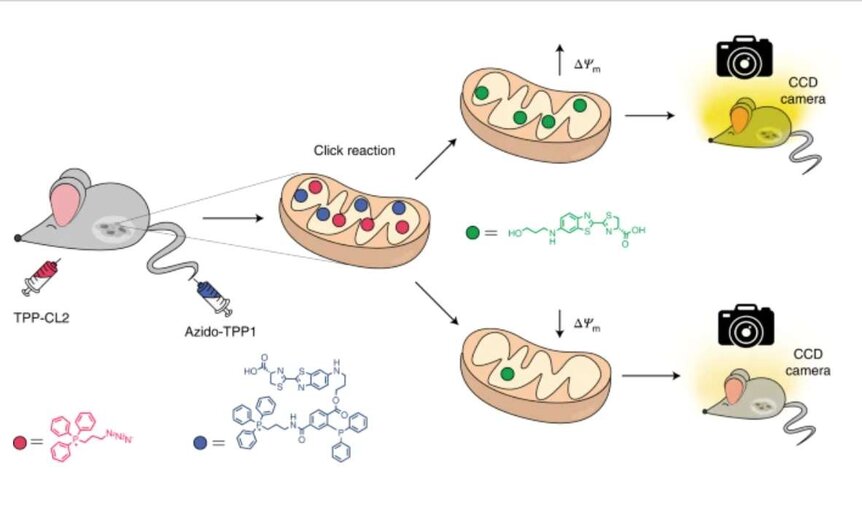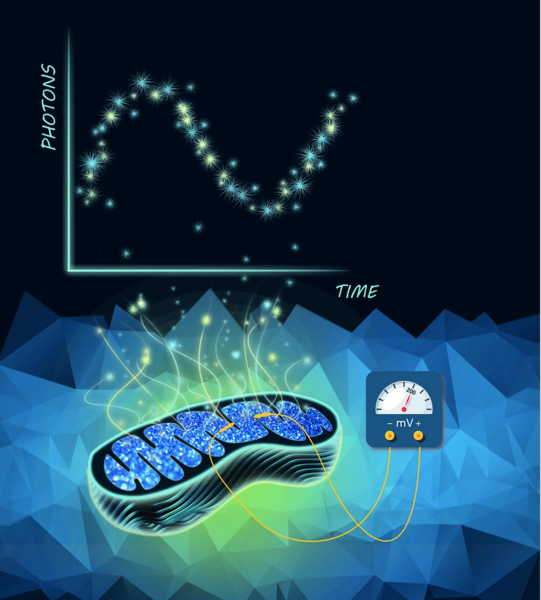Create a free profile to get unlimited access to exclusive videos, sweepstakes, and more!
Swiss scientists create glow-in-the-dark mice to study cellular function

Just when you think science might have exhausted all its wild experiments and pioneering discoveries, along comes an effort to explore the many mysteries of mitochondria using laboratory mice that actually cast a green tint when you shut the lights off. Yes, glow-in-the-dark rodents are now helping researchers delve further into the secrets behind the complexities of cellular function to aid in medical studies.
Methods for making bioluminescent mice are hardly new and have been employed for decades, but this new approach by a team of scientists at Switzerland’s Ecole Polytechnique Fédérale de Lausanne (EPFL) uses the same mechanisms of illumination as the summer fireflies that might dance in your own backyard to reveal the health meter of biological cells.
Their enlightening findings were published this week in the online journal, Nature Chemical Biology.
Mitochondria are rod-shaped, membrane-bound organelles that can be likened to the power generators of cells, converting oxygen and nutrients into adenosine triphosphate (ATP), which is the chemical energy of the cell that provides juice for its metabolic activities. However, as we age, when some condition or other cause forces their output drop, it's a tall task to figure out why.
Variations in electrical charges between the interior and exterior of the mitochondria, known as “membrane potential,” act as a gatekeeper for certain molecules to pass through, while others have to remain outside. Their exact role in the formation of diseases is vaguely understood by medical science, but by working with this new bioluminescent molecule, EPFL scientists can witness them at work in living animals.
To investigate why their filtering membranes might suddenly deliver reduced mitochondrial function, EPFL professor and lead study author Elena Goun utilized genetically-modified mice that displayed luciferase, a specific enzyme that unites with a second compound known as luciferin, to make common fireflies glow.
Goun and her team produced a pair of molecules to inject into mice that pass directly into the mitochondria and make them generate luciferin. The brighter they glowed, the greater the amount of luciferin is present, and therefore the healthier the mitochondria.
According to the findings, Mitochondrial membrane potential is a universal selective indicator of mitochondrial function and is well-known to play a vital role in numerous human pathologies, like Alzheimer’s and Parkinson’s diseases.
“Cell cultures are not very effective in studying diseases linked to mitochondria”, explains Goun. “Cancer or diabetes involve complex exchanges between various types of cells, therefore we need animal models. In a completely darkened room, you can see the mice glowing, just like fireflies.”
While scientists are well aware that age naturally creates a diminishment in the mitochondrial activity, this is the first time that this phenomenon has been carefully measured within breathing mammals. These innovative types of animal model methods for evaluating mitochondrial function might someday be indispensable in the development of new cancer drugs, in addition to providing clues into gene therapies for diabetes, oncology, aging, obesity, nutrition, overall vitality, and neurogenerative diseases.
“Our process can measure varying degrees of mitochondria activity, and not just an on / off signal,” adds Goun. “It is extremely sensitive – much more than a PET scan – affordable and easy to implement.”





























